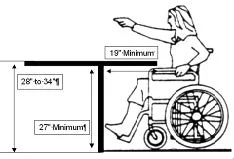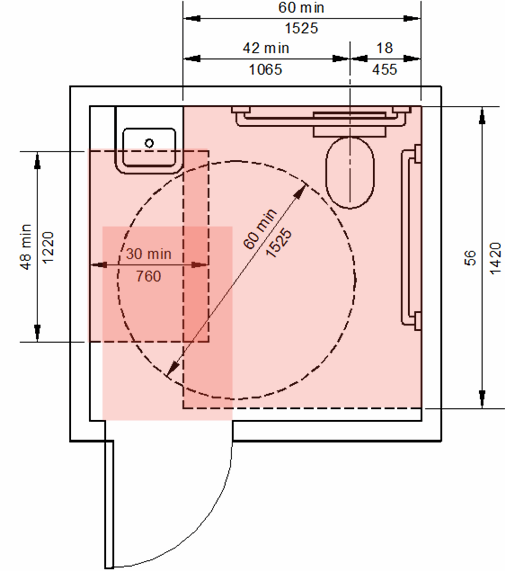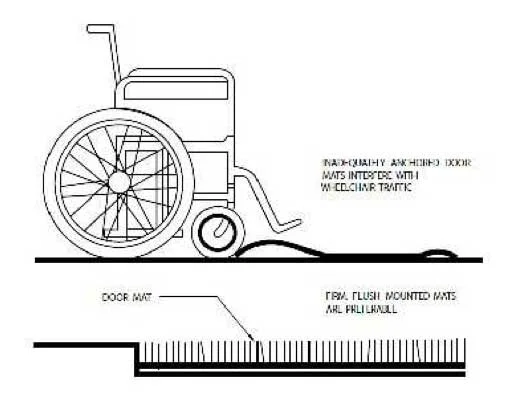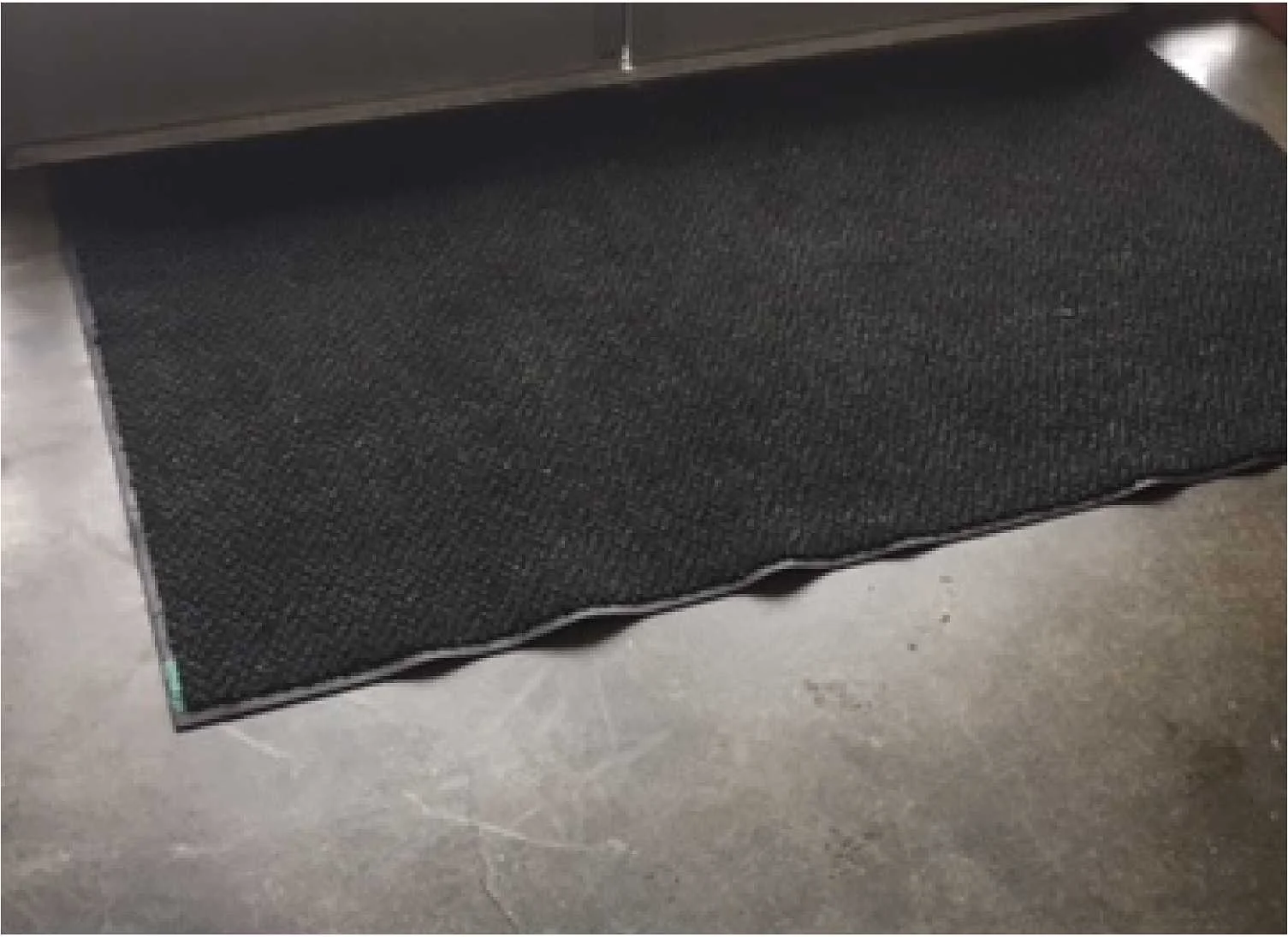It is becoming more and more common to find baby changing tables in restaurants and other businesses with public restrooms. As a father, I find that these tables are extremely helpful. In fact, if I have a choice between two restaurants and I know that there is a changing table at one but not the other, I will choose the restaurant with the baby changing table. It is very difficult to find a sanitary place in public to change your child if there is no baby changing table available. Many businesses understand that a need exists for parents and choose to provide this valuable amenity to serve more of their customers.
Unfortunately, many businesses that provide baby changing tables are exposing themselves to an accessibility lawsuit. The ADA and CBC both have strict standards about clear floor space and maneuvering clearances in restrooms. These clearances include; a 30"x48" space in front or the lavatory, a 60"x56" space around the toilet and up to a 54"x60" door clearance. If a baby changing table is located in any of these clearances, the business is out of compliance with accessibility laws. The diagram below shows how an otherwise compliant single user toilet facility simply cannot accommodate a compliant table if it is left in a down position. The same rules apply to multiple user restrooms with an additional requirement that the changing table cannot be located inside an accessible stall compartment. (A common violation)
As CASp inspectors, we always advise that our clients remove barriers to accessibility but baby changing tables come up quite often in our CASp inspection reports and owners are forced to make a tough decision between removing the tables to comply with accessibility laws or exposing themselves to potential lawsuits to serve the needs of parents.







